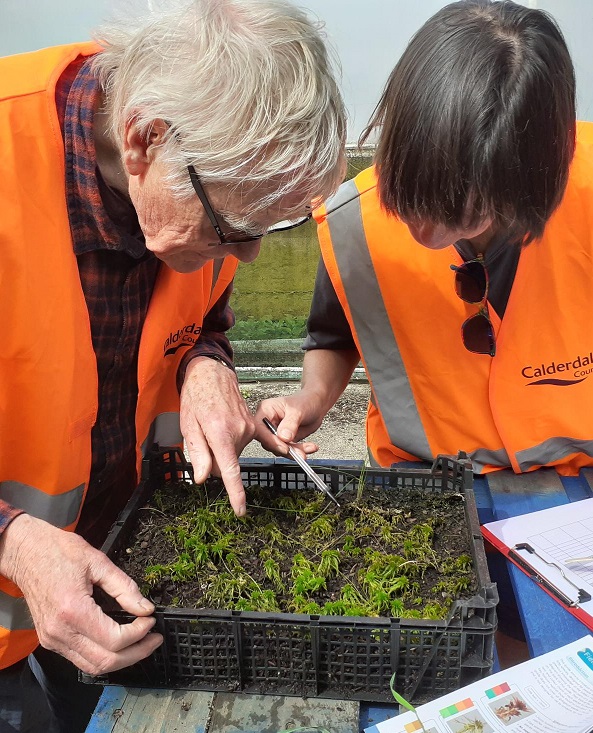
Calderdale Council’s countryside volunteers have been supporting moorland restoration and carbon capture, by studying various methods of growing sphagnum moss as part of the Growing Resilience project.
Sphagnum moss, which used to carpet the ground on local moors, is an important plant in natural flood management and carbon capture. It restores degraded moorland, soaks up carbon, retains water, prevents the decay of dead plant material and eventually forms peat.
Calderdale Council is taking part in a four-year project, funded through the National Lottery Climate Action Fund, to look at ways of growing the moss. Volunteers and the local community are helping to trial different options in a nursery setting, before the moss is planted in suitable sites around Calderdale to restore damaged moorland that currently emits carbon.
Around 150 trays of different species of sphagnum are currently being grown in the nursery at Manor Heath Park using a variety of different mediums including in wood chip, peat-free ericaceous compost and wool waste. The moss has been gathered with the kind permission of Yorkshire Wildlife Trust and Natural England from Broad Head Clough in Mytholmroyd and from RSPB Dovestones at Greenfield in Greater Manchester.
The countryside volunteers have been spending time examining and recording the effectiveness of the various methods of growing the sphagnum moss. This has involved making a note of when it was planted, where it was sourced, what species it is and any other external factors (disturbed ground, inconsistent watering etc.) to determine ideal growing conditions. Results are continuing to be analysed, but indications are showing that one species is showing a clear preference for particular growing conditions (Sphagnum Palustre in peat-free ericaceous compost).
The next steps for the project involve promoting the work at local events to recruit more volunteers and engaging with landowners who may have land suitable to support the project’s work. The project is also being expanded, with an additional base planned in the lower Calder Valley at Cromwell Bottom Nature Reserve.
Calderdale Council’s Cabinet Member for Climate Change and Resilience, Cllr Scott Patient, said:
“Local climate action takes many forms and the sphagnum moss project is an important part of our wider work, in partnership with other organisations and community volunteers, to protect and restore our precious moorlands.
“Sphagnum moss is an important plant in natural flood management and carbon capture. It keeps our peat moorland wet, holding the water onto the hills and preventing surface run-off and subsequently protecting our valley communities from flooding.
“There are actions we can all take to protect the environment and our peatlands. One option is to look for peat-free alternatives when buying plants or composts for our gardens. There are lots of sustainable alternatives available, so it’s a simple but important switch to make for amateur gardeners.”
To find out more about the Calderdale Sphagnum Project or to get involved, please email countryside@calderdale.gov.uk
